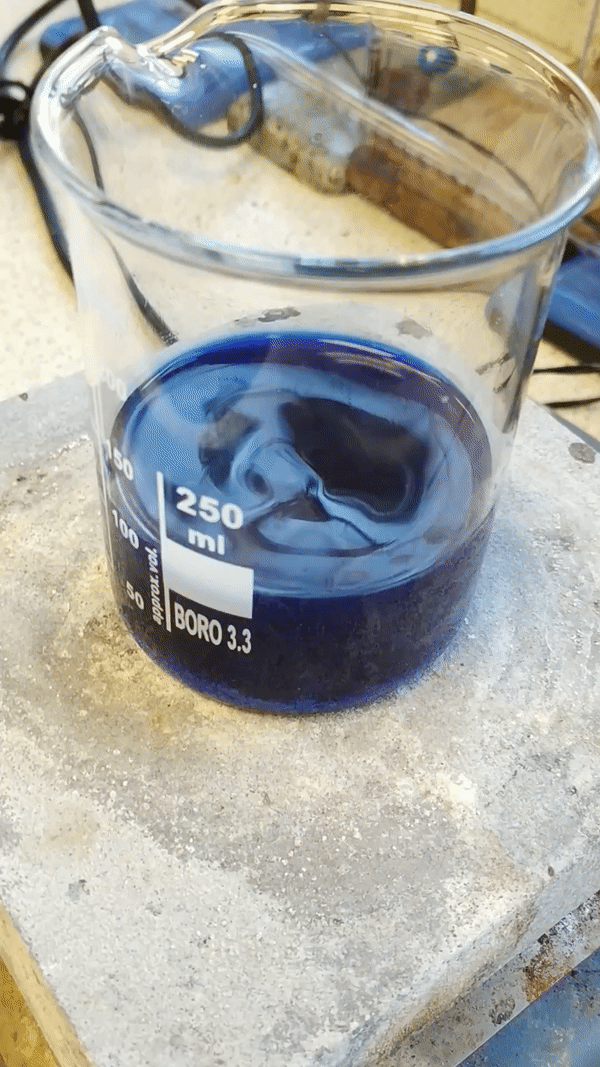In one of the earlier sessions of Exploring Everyday (Bio)Chemistry Society, we discussed the properties of natural polymers (including spider silk). Our focus now moves on to artificial polymers (including rayon and nylon). During our experiment based sessions of this term, we replicated one of the earliest methods of synthesising rayon (a semi-synthetic fibre designed 125 years ago by the English chemist, Charles Frederick Cross).
First, a solution of tetra-amine-copper(II) ions must be prepared; I measured out 10 grams of basic copper carbonate and, working under a fume hood, added 100 cm3 of 880 ammonia solution. Despite operating in one of the best-ventilated labs, the choking scent of ammonia wrapped its tendrils around my airways almost immediately- suffocating me. I can safely say that the outcome of this experiment was still definitely worth it!


[Carefully measuring out the copper carbonate and dissolving it in ammonia to form a solution of tetra-amine-copper  ions]
ions]
Next, I added 1.5 grams of finely shredded cotton wool to the solution. The cotton wool provides the cellulose (a natural reactant) for the reaction- which is why rayon is only a semi-synthetic polymer.
When cotton is dissolved in this solution, the resulting mixture becomes surprisingly viscous (with an almost shower gel-like consistency).
This initially presented a slight problem in achieving complete dissolution- a problem which was solved with the help of an exciting device I’d never had the chance to use before: a magnetic stirrer.
A magnetic stirrer consists of a small bar magnet which is dropped into the solution and a device which creates a rotating magnetic field – forcing the bar magnet to rotate and, hence, stir the solution.
The resulting effect is that the solution appears to stir itself – much to the shock and delight of some of the younger attendees of the session!
The final step is to simply inject a thin stream of the deep blue solution under the surface of some sulfuric acid. As the solution enters the acid, its pH drops swiftly and the complex compound is converted into insoluble rayon.

Although the rayon initially appears deep blue in colour, as the copper (II) ions diffuse out of the rayon (reacting with the sulfuric acid to form copper sulfate solution), the colour quickly fades away- leaving behind only the delicate, translucent fibres.








